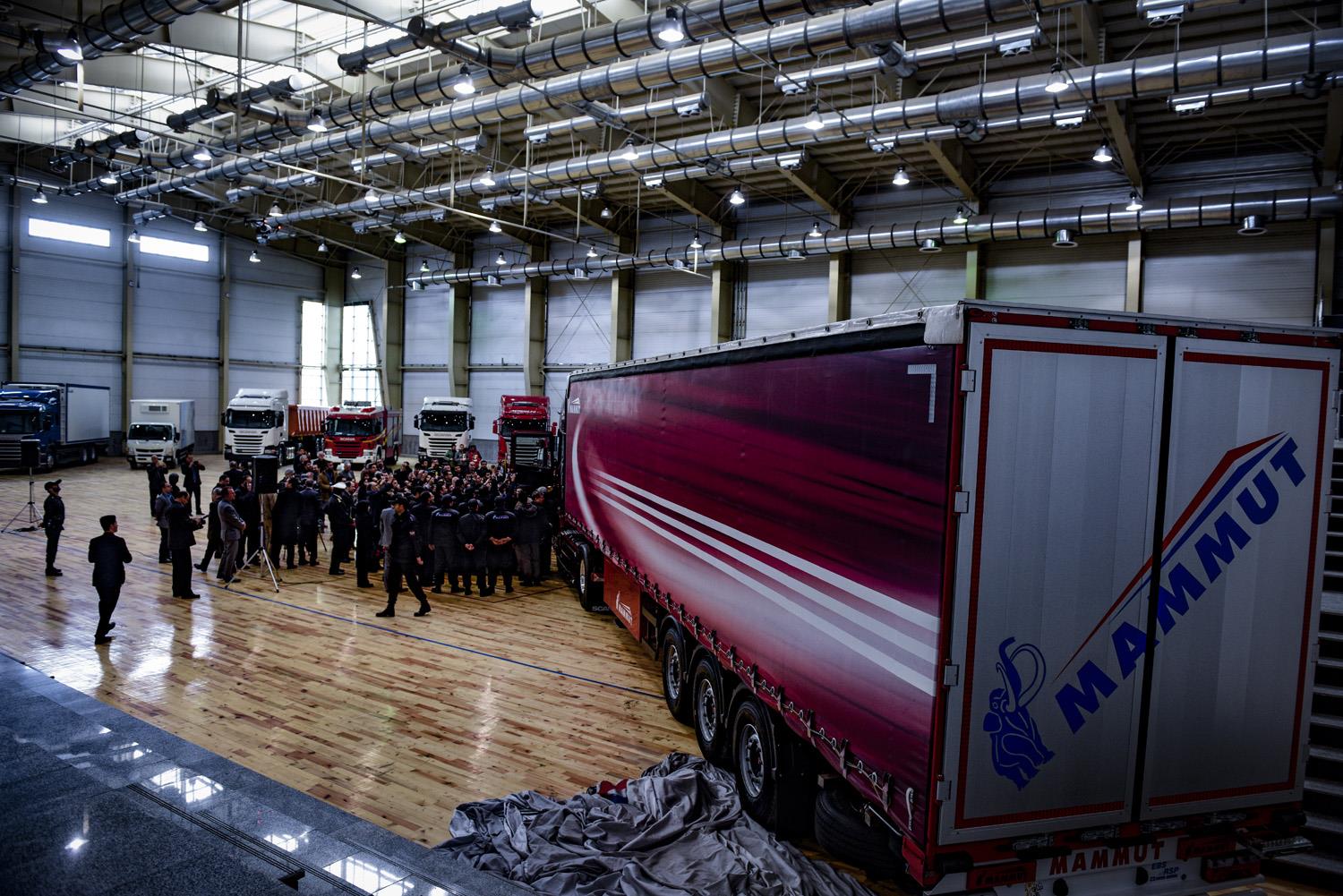The Iranian government is moving to replace aging vehicles in its cargo truck fleet to cap fuel consumption and help contain the country's worsening air pollution.
Based on a trilateral contract signed by the Roads Ministry-affiliate Road Maintenance and Transportation Organization, Iranian Fuel Conservation Company and Mammut Industrial Group, 5,000 aging trucks will be replaced with new ones, the Ministry of Roads and Urban Development’s news service reported.
The contract was signed in a ceremony in Mammut Industrial Group's factory located in Alborz Province on Sunday. Minister of Roads and Urban Development Abbas Akhoundi and his deputy Davoud Keshavarzian addressed the ceremony.
The trucks will be financed via leasing, with 80% of the costs covered by facilities provided by the government.
The private Mammut Industrial Group was established in 1992. It is active in a variety of fields, including the manufacture of cargo and commercial vehicles, trailers and prefabricated buildings. Its subsidiary, Mammut Diesel, which produces both CBU and CKD trucks, is the official sales and services representative of SCANIA—the Swedish manufacturer of heavy trucks.
There are 120,000-130,000 vehicles in Iran's cargo truck fleet with over 25 years in age on average, according to Keshavarzian.
The old age of the fleet has resulted in excessive fuel consumption, while contributing to air pollution.
As part of an agreement between the ministries of roads and oil, the government is planning to replace 65,000 dilapidated trucks within five years.
Keshavarzian, who also chairs RMTO, said this will cost the company roughly $2.7 billion—an average of $42,000 for each vehicle. But based on the inter-ministerial plan, this sum will be covered through Oil Ministry’s savings generated by fuel conservation as a result of the replacements.
“This (the replacement of 65,000 old trucks) will reduce diesel consumption by 1 billion liters per year, generating an income of $1 billion annually,” Akhoundi was quoted as saying during the Sunday ceremony.
“Sadly, in our country, easy access to energy has led to profligacy.”
In addition to the old fleet, high and inefficient fuel consumption has been blamed on subsidies paid by the government to fuel over the past decades.
In the past few years, the government has taken measures to gradually remove fuel subsidies to control fuel consumption among other objectives. The ultimate aim of the scheme is to liberalize fuel prices.
This, officials believe, could motivate transportation companies and truck drivers to purchase new vehicles that meet international fuel consumption and safety standards.
Noting that the price of diesel is one-third of gasoline's, Akhoundi said owners of the new trucks will stand to benefit considerably as the vehicles' fuel consumption is 50% less than the old trucks currently in use.
The move is also aimed at tackling air pollution, which has reached alarming levels in big cities across Iran during the past few years.
“Based on the estimates, the plan to rejuvenate the road fleet will reduce the pollutants by 194 million tons,” he added.
According to a report by Roads Ministry, Iran needs 15,000 new trucks each year to renovate its aging fleet.
More than 4,000 cargo transport companies are active across the country, carrying over 380 million tons of commodities nationwide every year. Moreover, some 860 companies transport over 4.6 million tons of freight from domestic ports to destinations in European, Central Asian and neighboring countries.


